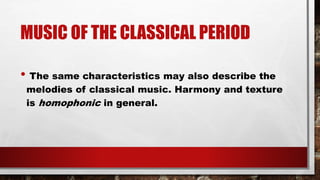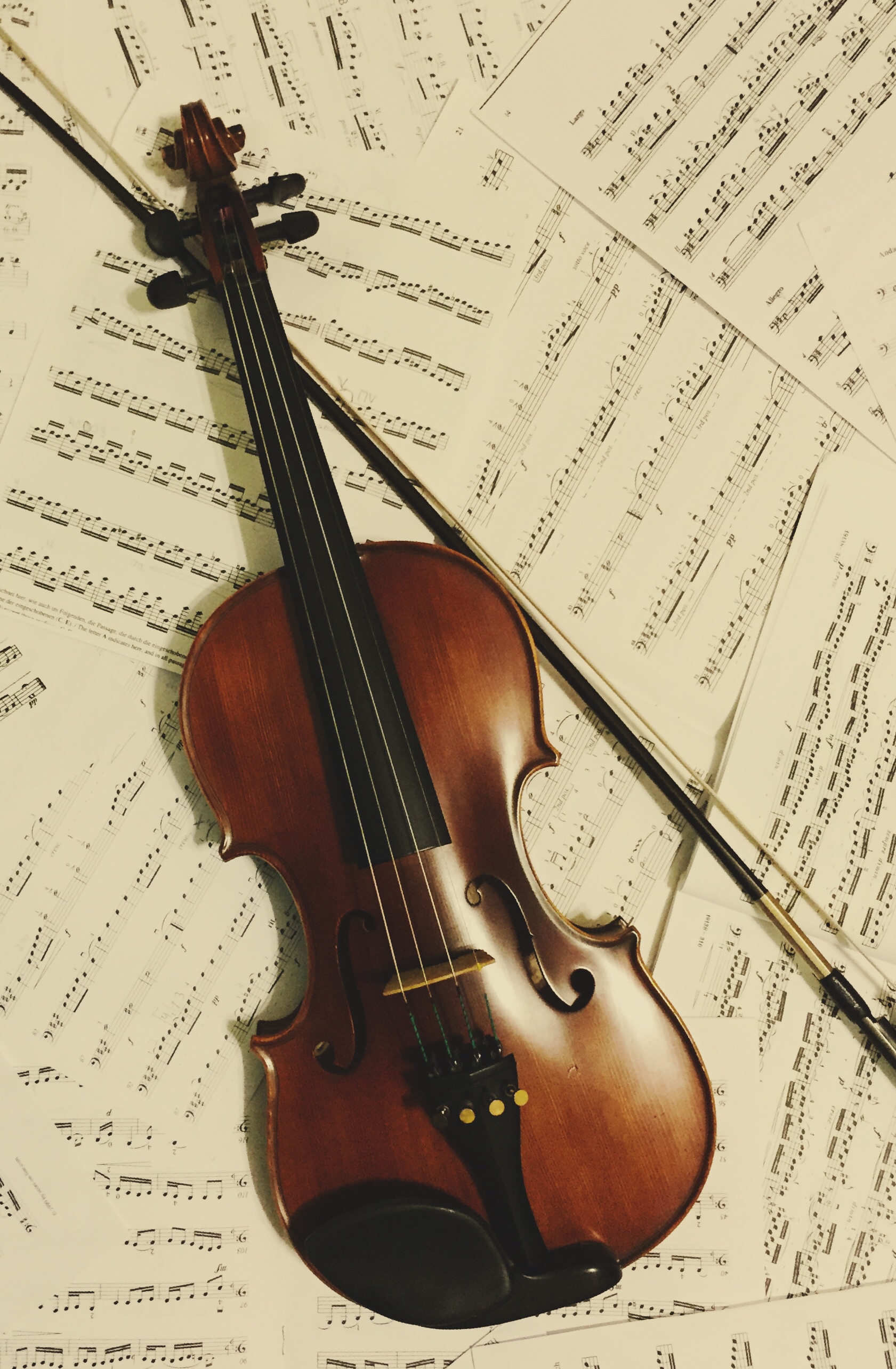Regarding Texture Which Best Describes Classical Period Music
In the Baroque period music for keyboard Was created mainly for use in instrumental genres such as sonatas suites and concertos. The musical texture that consists of a single melody without accompaniment is called.

Rococo Music Period Style Video Lesson Transcript Study Com
The Classical period was an era of classical music between roughly 1730 and 1820.

. An introduction to musical style describes ways in which style is characterized by composers and music theorists. The phrase that best describes the general shape of melody during the Romantic period is. A phase with an inconclusive ending followed by a phase with a conclusive ending.
During the Abstract Expressionist period all of the following favored creating art. Hence it is light and transparent. Listen to this music example and answer the following question.
Which of the following statements best. The approximate dates of the Classical era in music are. They can be heard in the opening of the first movement from.
To add body to his musical texture and to put the listener slightly on edge Wagner has the woodwinds play continually in. Which best describes the predominant texture of the first movement of Mozarts Eine. By the end of the Classical era the musical capital was in which city.
One characteristic of this excerpt that suggests it might be from the Baroque Period is. Question and answer phrases are also known as antecedent and consequent phrases. The texture of the following example from the Classical period can best be described as38.
Show activity on this post. The transition from the baroque style to the full flowering of the classical that extended from roughly 1730-1770. Which of the following terms best describes the music of the classical period.
The Classical period falls between the Baroque and the Romantic periods. The texture of the following example from the Classical period can best be described as38. In music ______________ refers to a characteristic way of using melody rhythm tone color dynamics harmony texture and form.
The dates given in this course for the Classical period are. Music offering contrasts of mood and theme. It is mainly homophonic using a clear melody line over a subordinate chordal accompanimentbut counterpoint.
We can say that the harmony in the following example is typical of the Classical period because it features26. Texture in classical music tends to be homophobic rather than polyphonic Which of the following best describes the balance and symmetry in a typical melody of the classical era having the form A A. Despite the classical approach to sculpture adopted by Auguste Rodin which example best explains why the artists work is distinctly modern.
It is mainly homophonic using a clear melody line over a subordinate chordal accompaniment but. The Classical period flourished in music during the years_____. Classical music has a lighter clearer texture than Baroque music but a more sophisticated use of form.
Which period is known as the Classical Period. Texture in a sound-design acoustic and sound engineering context refers to the harmonic content of a sound its timbre. Which sentence best describes why the painting of Édouard Manet is considered modern.
How can musical style be recognized and synthesized. It is sung a cappella. Music with two or more notes sounding at a the same time but generally featuring a prominent melody in the upper part supported by a less intricate harmonic accompaniment underneath often based on.
Compared to Baroque composers Viennese Classical composers employed polyphony in their music only occasionally and usually in the development section of a sonata form movement. The secular text and overall musical style of this example suggest that it is from aan. Music with only one note sounding at a time having no harmony or accompaniment.
Classical music has a lighter clearer texture than baroque music and is less complex. It was home to many noble and aristocratic families with the resources to support music. Early baroque music is characterized by frequent use of polyphonic texture.
Periods composers performers sonic texture emotion and genre. It contrasts a group of instruments with a solo instrument. It seems to refer to movement pitch rhythm voices.
The texture of Classical period music is generally homophonic with a thinner bass and a middle range. Who would be a likely composer for this work47. Sudden loud and soft notes.
Chord accompaniment and clear strong cadences. In music texture is how the melodic rhythmic and harmonic materials are combined in a composition thus determining the overall quality of the sound in a piece. Texture is often described in regard to the density or thickness and range or width between lowest and highest pitches in relative terms as well as more specifically.
Now that Im starting to dive into classical music theory it seems that texture has a different meaning. Fill in the blank. Which period is known as the Classical Period.
Music Appreciation Part 4. Which is a true statement regarding the musicians place within the patronage system during the Classical era. In recent years many aspects of music style have been studied from the standpoint of automation.
Classical music has a lighter clearer texture than Baroque music and is less complex. It is mainly homophonicmelody above chordal accompaniment but counterpoint by no means is forgotten especially later in the period.

Solved Describe The Musical Characteristics Of The Classical Chegg Com


No comments for "Regarding Texture Which Best Describes Classical Period Music"
Post a Comment